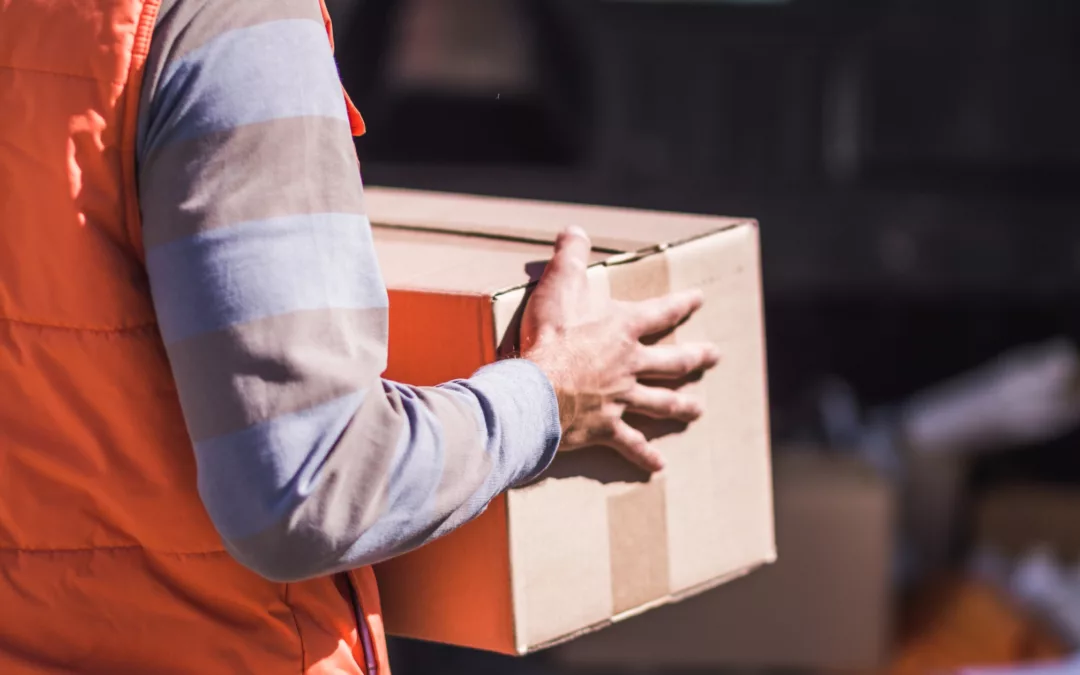Last-mile delivery is a crucial aspect of the shipping process: It can be the difference between a satisfied or dissatisfied customer, and it can heavily impact your bottom line.
Last-mile delivery — in which a package leaves the fulfillment center to its final destination (usually a personal residence) — is one of the most expensive aspects of retail logistics, accounting for more than 53% of your total shipping costs. While last-mile delivery logistics aim to deliver a package as affordably, quickly, and accurately as possible, businesses spend an average of $10+ per order on this shipping phase.
There’s no way around it: Last-mile delivery costs are a substantial part of shipping. But, by incorporating certain strategies — such as route optimization, carrier selection, and package tracking tools — you can optimize last-mile delivery to ensure more efficient and reliable shipping, reduce costs, and create a best-in-class customer experience.
Here is a look at the challenges of last-mile delivery and strategies to improve this phase of the shipping process.
Challenges of last-mile delivery optimization
Delivering thousands of packages to their final destination daily is a complex logistical challenge for everyone involved. Delivery drivers have to make multiple stops and travel at lower average speeds. They also deal with failed deliveries, out-of-route miles due to traffic or accidents, and sometimes a lack of operational clarity (for example, what to do when they get off track). Companies encounter a lack of real-time last-mile visibility, increasing customer anxiety around delivery times, and less control over last-mile operations.
These challenges lead to reduced operational efficiency, higher operating costs (and lower profit margins), poor customer experiences (and less brand loyalty), and more cancellations and returns of products.
How can you optimize for last-mile delivery?
Last-mile delivery success depends on route optimization, carrier selection, and package tracking tools. These solutions have the ability to improve your customers’ experience, increase revenue, and decrease delivery costs from the start of the buying process.
Route planning and optimization
Routing algorithms use data related to the last-mile delivery process, such as time of day, location, speed limits, vehicle capacity, fleet size, current and historical traffic patterns, delivery windows, and shift times to optimize delivery routes. Then, a route planning application can provide real-time updates on the most efficient routes to take.
Some strategies to optimize your delivery routes include dynamic routing, multi-stop routing, and zone-based routing. You can also turn to tools or technologies such as GIS (Geographic Information Systems) or software for route optimization and/or telematics and fleet management.
Poor last-mile delivery route optimization leads to inefficient fleet usage, unreliable delivery times, increased fuel costs, failed deliveries, and inflexibility when unexpected events occur. Incorporating route planning and optimization in your last-mile delivery allows for shorter, more efficient journeys reducing fuel cost, wear and tear on vehicles, driver hours, and emissions. This results in higher customer satisfaction and increased flexibility in your drivers’ routes.
Carrier selection
Choosing the right last-mile carrier is an increasingly important way to improve last-mile delivery capacity and optimization.
When considering your carrier selection, you should take into account your last-mile needs. Do they offer access to tracking information throughout the entire last-mile delivery process? Are there multiple service levels? Can you customize the services offered? In addition to traditional, multi-day fulfillment models from warehouses, can the carrier ship from a store or a hub? Do they offer same-day, on-demand delivery options? The shipping costs, average driver capacity, and customer experience are all important considerations as well.
You should also focus on driver enablement by the carrier. When it comes to the execution of the last-mile delivery, the driver is arguably the most important element of the process. A combination of tracking, alerting, in-route information, and post-route coaching can enable every driver to deliver the best results..
A carrier with real-time GPS tracking and intelligent dispatching solutions allows managers to understand when drivers veer from their plan and why. Maintaining a close eye on your drivers is one of the best ways to improve safety and efficiency during last-mile delivery.
Package tracking tools
In last-mile delivery, the most important data points to track are your courier location, the package status, the estimated time of arrival, and the delivery confirmation. Last-mile tracking uses GPS to monitor these points and provide real-time updates. That information is then relayed to your customers so they can know when to expect their packages.
There are three primary ways to track your packages:.
- Last-mile tracking software as a service
- Use tech-enabled courier services
- Build a custom solution
Each of these has its pros and cons, but overall using last-mile package tracking tools increases your efficiency and customer service and creates lower costs, greater visibility, and improved planning for your last-mile delivery. With 97% of customers expecting the ability to monitor their orders throughout every step of the shipping process, this is a crucial point of your delivery plan.
Better shipping, better business
Many businesses don’t have insight into the cost of last-mile delivery because they rely on traditional logistics metrics only. With the increasing pressure to offer free shipping, profitability can suffer from a lack of operational effectiveness. The right shipping software can help increase operational effectiveness, lower operational costs, and boost customer satisfaction using techniques like delivery route optimization, better carrier selections, package tracking tools, and other last-mile delivery technologies.
Read more:

